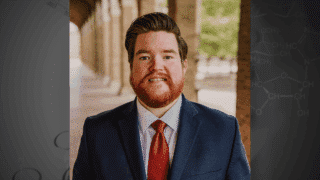Liesl Janssens of Ghent University won the Young Scientist Award for Best Oral Presentation at 2022’s virtual meeting of The International Association of Forensic Toxicologists (TIAFT). The award comes from the presentation of PCC-funded research performed in Dr. Christophe Stove’s lab. Liesl’s presentation focused on the set-up of a method that aims at detecting the use of HIF stabilizers, which can boost athlete performance, especially for endurance athletes.
HIF stabilizers are being explored for clinical applications, specifically for treating anemia, among other ailments. However, as with many drugs targeted toward anemia, there is evidence that HIF stabilizers are being used by athletes as a replacement for older erythropoietin-based doping strategies.
For example, several cyclists have admitted to using a new HIF stabilizer, FG-4592. The issue isn’t just finding a way to detect one specific stabilizer, like FG-4592, but rather finding a universal way to detect all HIF stabilizers going forward.
The research team developed a novel approach to directly sense HIF activation by monitoring the unification of the two HIF subunits, called HIFα and HIFβ. When the two subunits combine, they make up a functional HIF transcription factor, which controls the physiological processes that can lead to a performance advantage.
These new bioassays, performed in live cell cultures in the lab, outperformed a hypoxia response element-based gene reporter assay, the current state-of-the-art activity-based assay, in terms of sensitivity. They also showed broad applicability for different HIF stabilizers.
Janssens and Stove’s research is further described in an October 2021 paper in the leading journal Analytical Chemistry, titled “Sensing an Oxygen Sensor: Development and Application of Activity-Based Assays Directly Monitoring HIF Heterodimerization”. You can review the paper here.
Inspired? Check our research priorities to see if your research could qualify for PCC funding. Then check out our application center.




